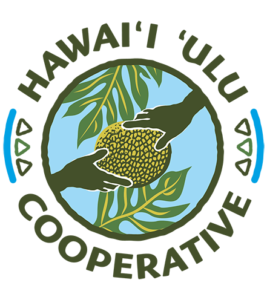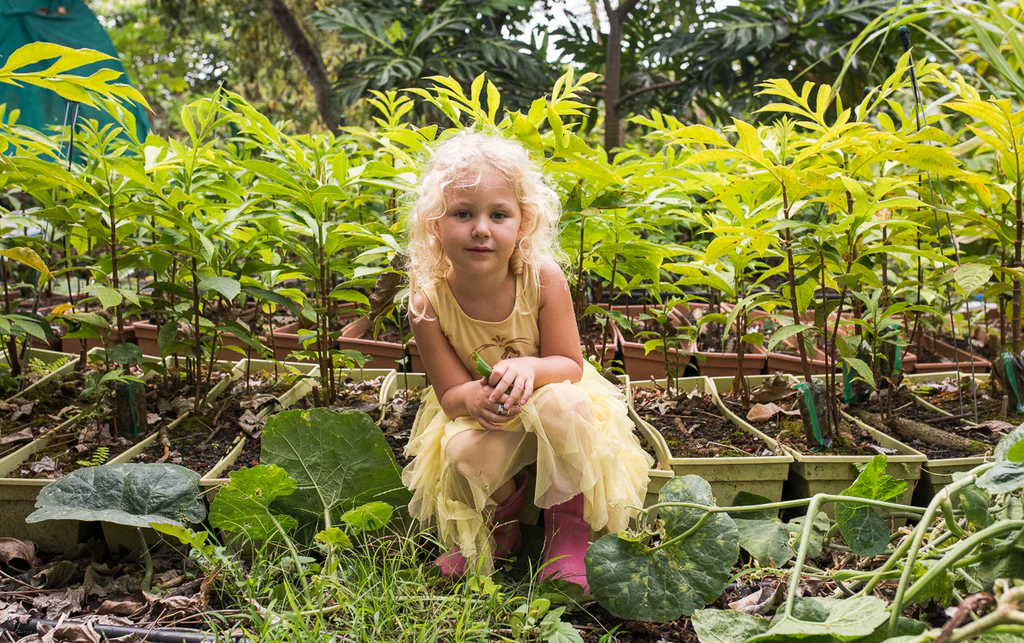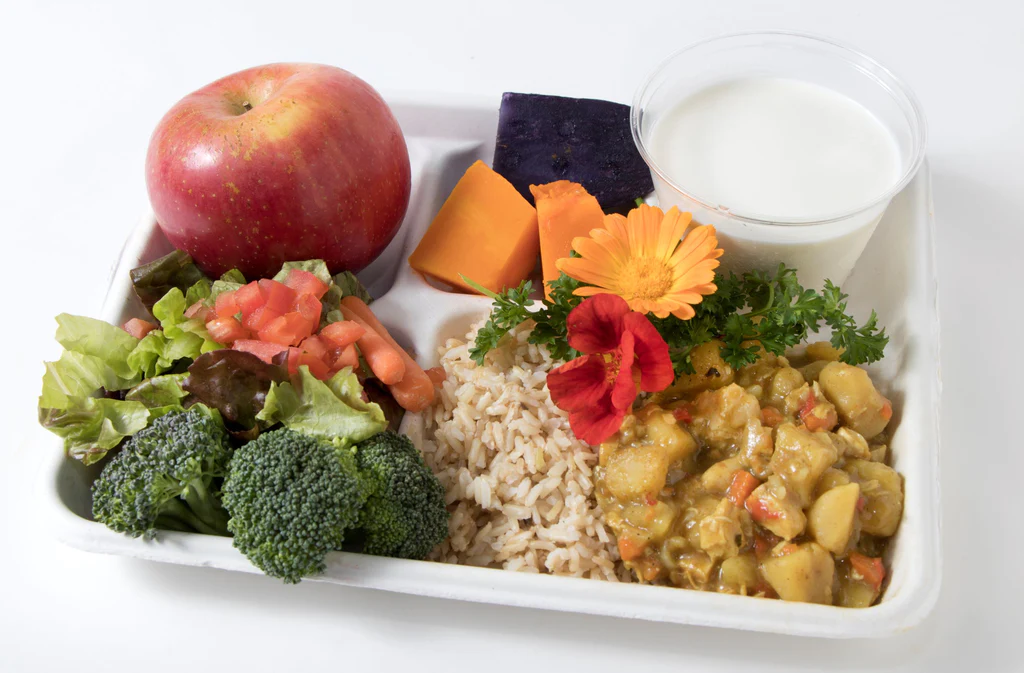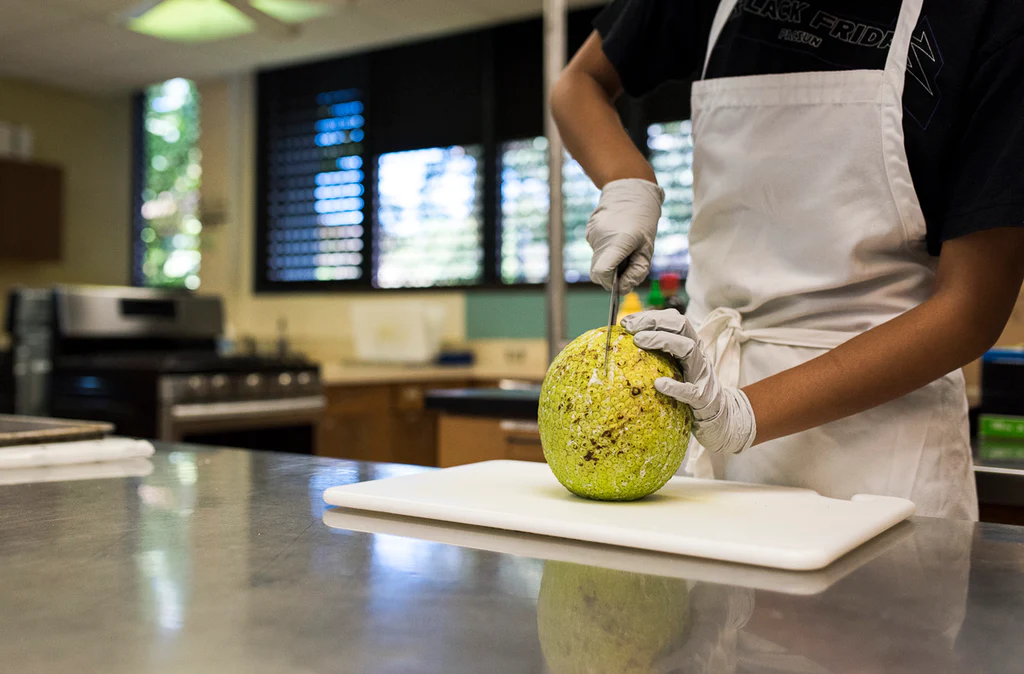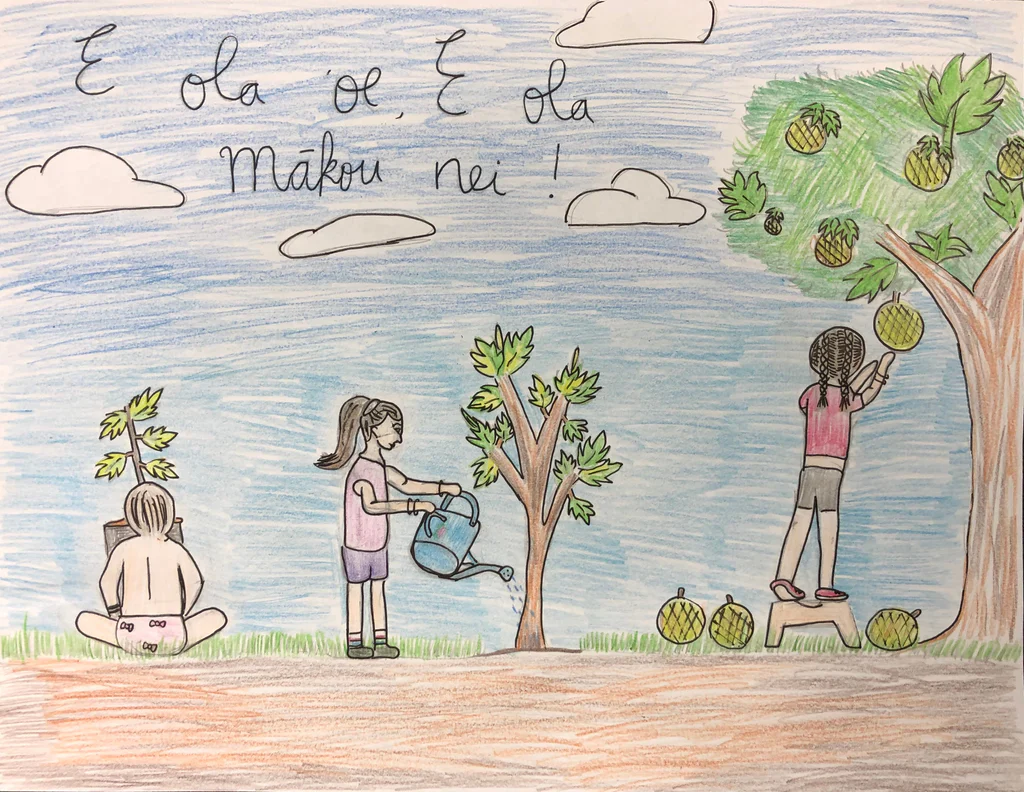ʻUlu Education Toolkit
The ‘Ulu Education Toolkit launched in the summer of 2021 on the University of Hawai‘i at Mānoa College of Education’s STEMS² website. The toolkit is an interdisciplinary, standards-aligned, searchable online database of ʻulu and other indigenous crops resources to help anchor the Farm to School movement within the lives of Hawaiʻi’s youth.
Watch the tutorial above to learn more about how to use the ʻUlu Education Toolkit and use the link below to try out the Toolkit for yourself!
Farm to School & the ʻUlu Education Toolkit’s Origin
What does “Farm to School” mean? Farm to School is a movement designed to connect children with fresh food and food systems knowledge at school to improve life-long health and educational outcomes. There are three main pillars that make up the Farm to School movement:
- Procurement: connecting school cafeterias with local food producers
- Education: promoting nutrition and food systems education in classrooms
- School-based agriculture: increasing hands-on, experiential education in school gardens.
Why is Farm to School important? The Hawaiʻi ʻUlu Co-op (HUC) first realized the importance of Farm to School when a study published by the University of Hawaiʻi showed most people in Hawaiʻi eat ʻulu less than three times per year. Effective Farm to School programs combine the introduction of new foods with holistic education and hands-on opportunities to help youth integrate more local foods into their diet.
Hawaiʻi ʻUlu Co-op has accomplished three tasks since incorporating the Farm to School Program:
- Supplied Hawaiʻi-grown produce to every Department of Education school in Hawaiʻi from 2018-2020;
- Sponsored a Foodcorps service member in 2020-2021 to support garden and nutrition education in East Hawaiʻi public elementary schools;
- Launched the Hoʻopili ʻAi: Uniting Keiki & Hawaiʻi Food Crops campaign in 2022.
The ʻUlu Education Toolkit is the result of a multi-year collaboration, beginning in 2018 between the Hawai‘i ‘Ulu Cooperative, and Hawai‘i Farm to School Hui/Hawai‘i Public Health Institute, and joined in 2019 by the STEMS² Program at the UH Mānoa’s College of Education. The project was originally funded through the support of a USDA Farm to School grant which HUC received to develop educational materials about ʻulu.
Over the past several years, many other community partners have joined in the Toolkit development – including dozens of individual resource contributors across the pae ʻaina, drawing on the mana‘o, experience, and hard work of many organizations, individuals, and generations.
Educators are invited to use the Toolkit to incorporate lessons about ʻulu into their classrooms, school gardens, and formal or informal learning environments, from preschool through post-secondary levels. Interactive discussion boards serve as a space for teachers to reflect on resources and share lesson extensions and differentiations.
The supplementary resources, videos, recipes, lessons, and unit plans contained within the Toolkit share not only valuable knowledge about ‘ulu and other indigenous crops, but also the values of mālama ‘āina, ‘ike from both traditional and contemporary sources, and ola for Hawai‘i, especially for our keiki.
The launch of the ‘Ulu Education Toolkit aims to increase appreciation and utilization of ʻulu (breadfruit) as a staple starch. “It is thrilling to know that more people can now easily access information about ‘ulu,” says Dana Shapiro, General Manager of Hawai‘i ‘Ulu Cooperative.
“Rebuilding our communities’ knowledge of and appreciation for indigenous crops is key to fostering greater food system resilience in Hawaiʻi. This process starts and ends with our youth – the islands’ future eaters, shoppers, farmers and leaders. I look forward to seeing the discoveries, programming and possible policy changes that this evolving project may spark.”
